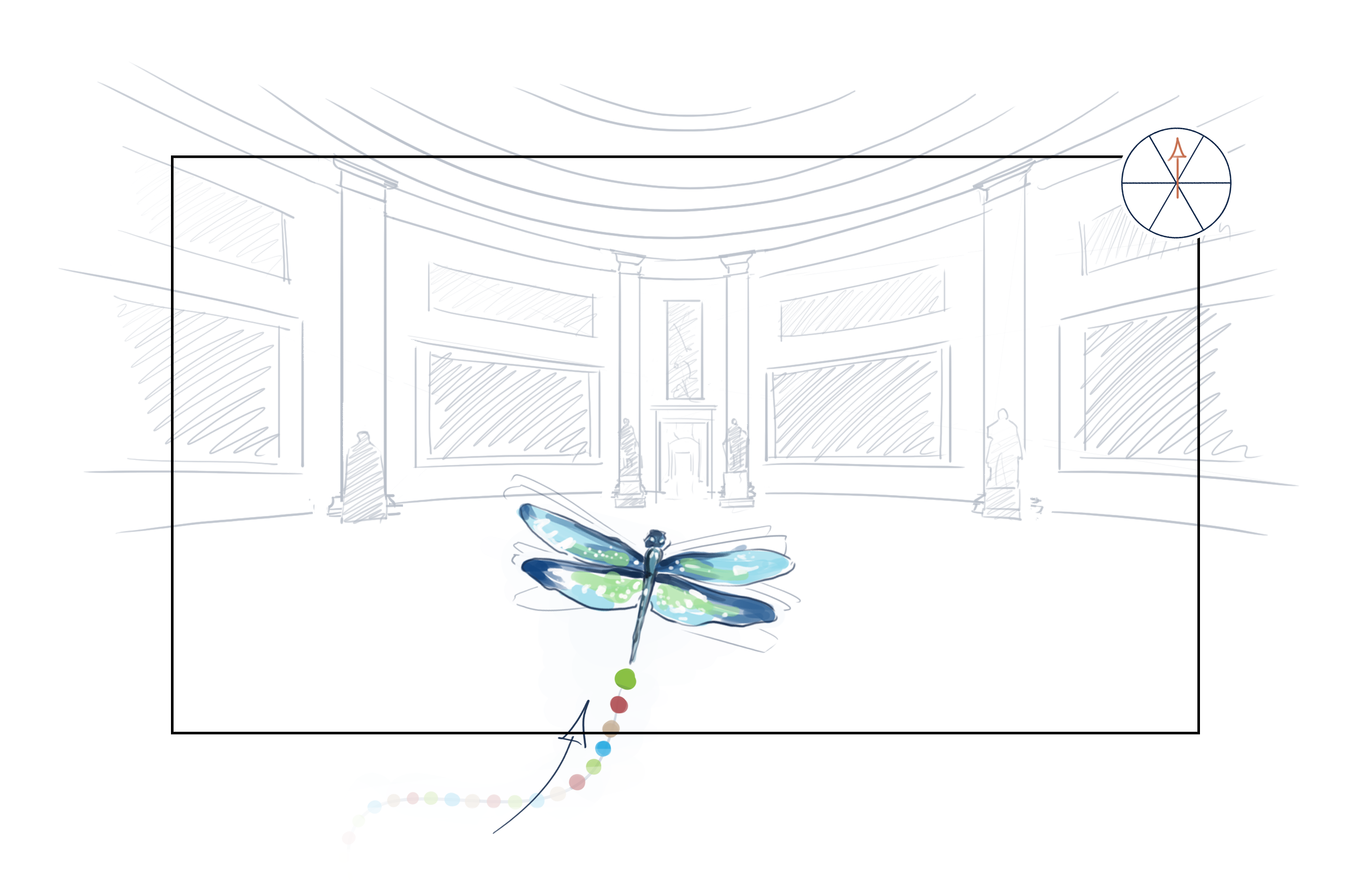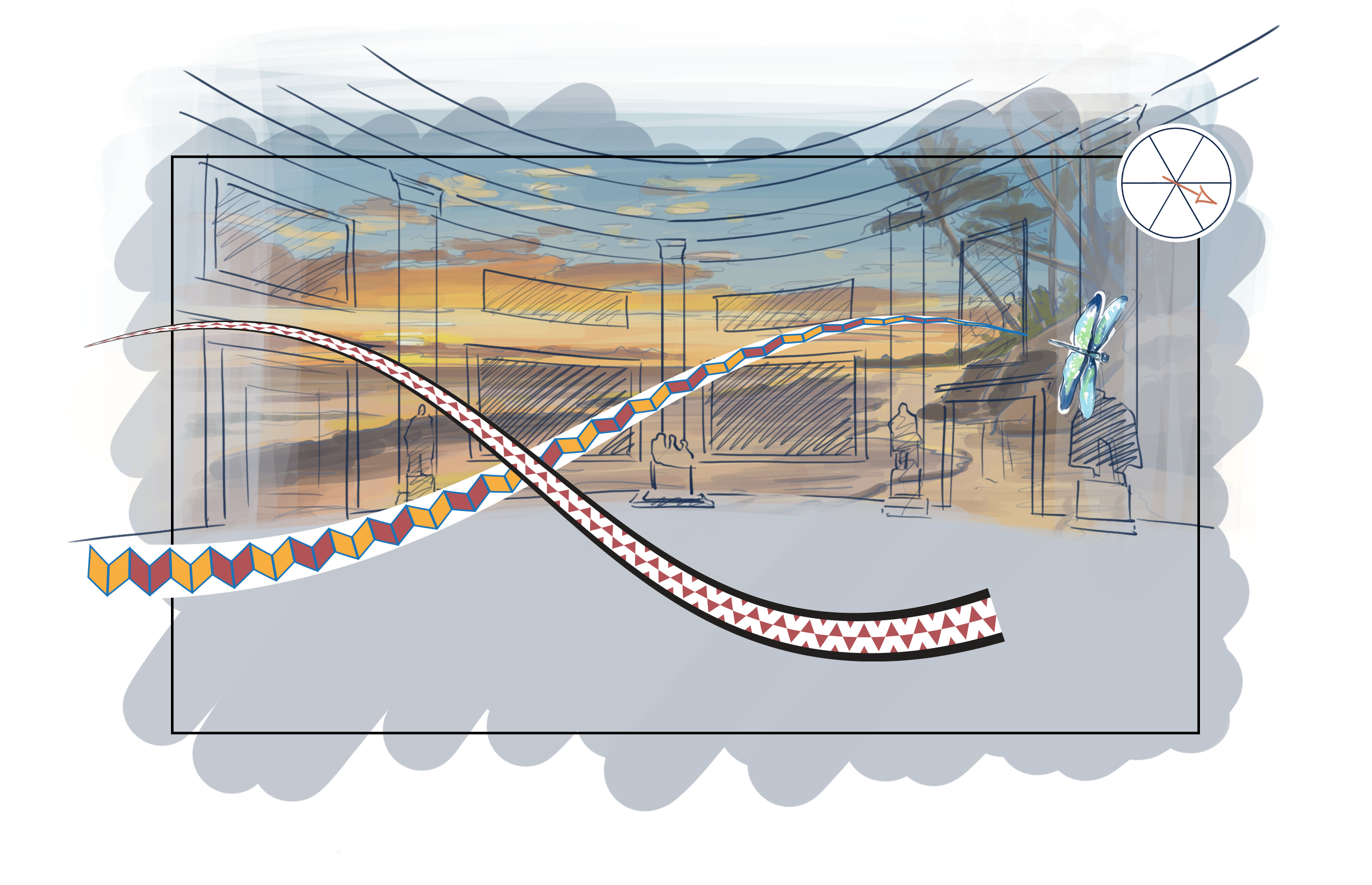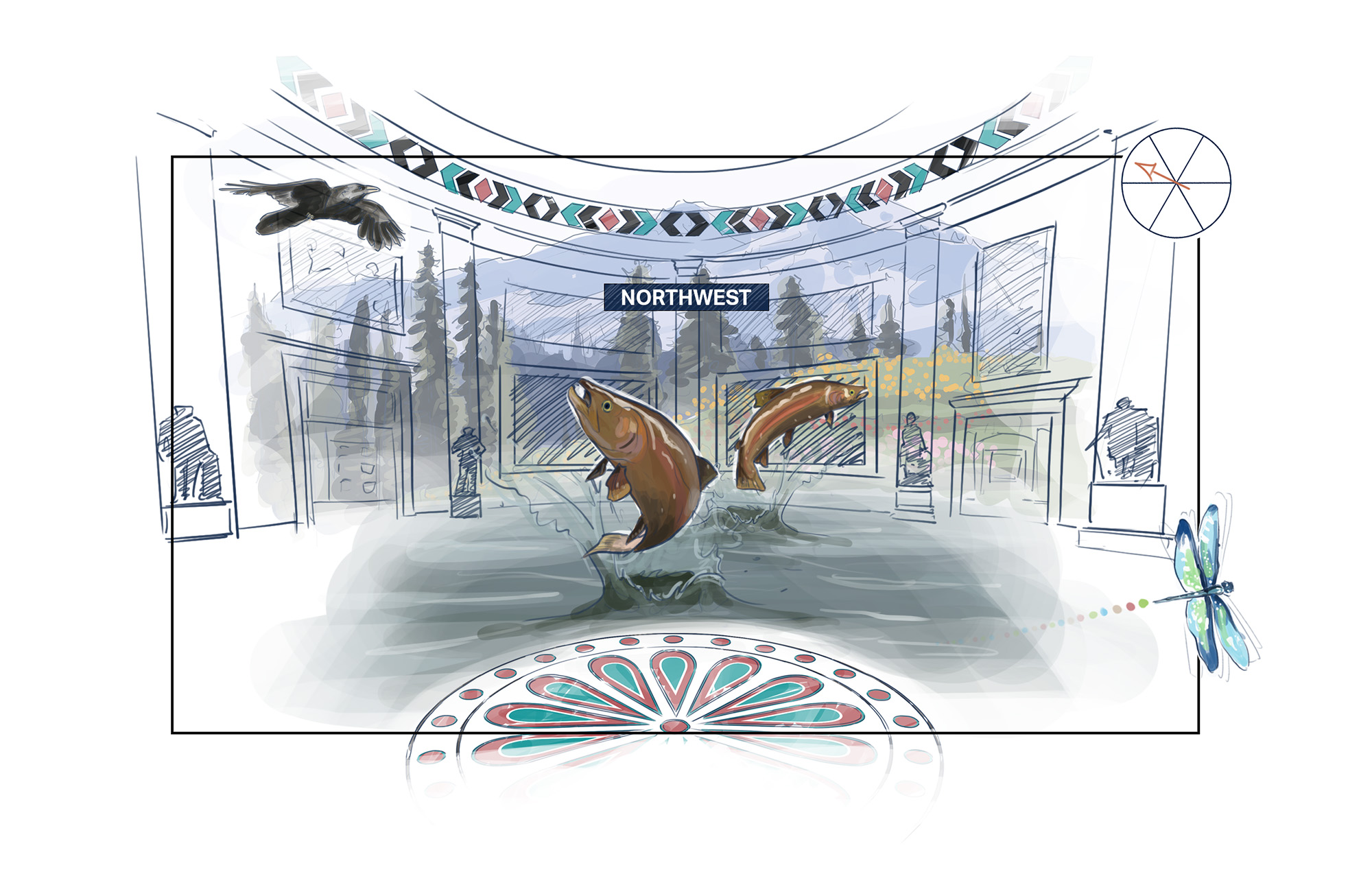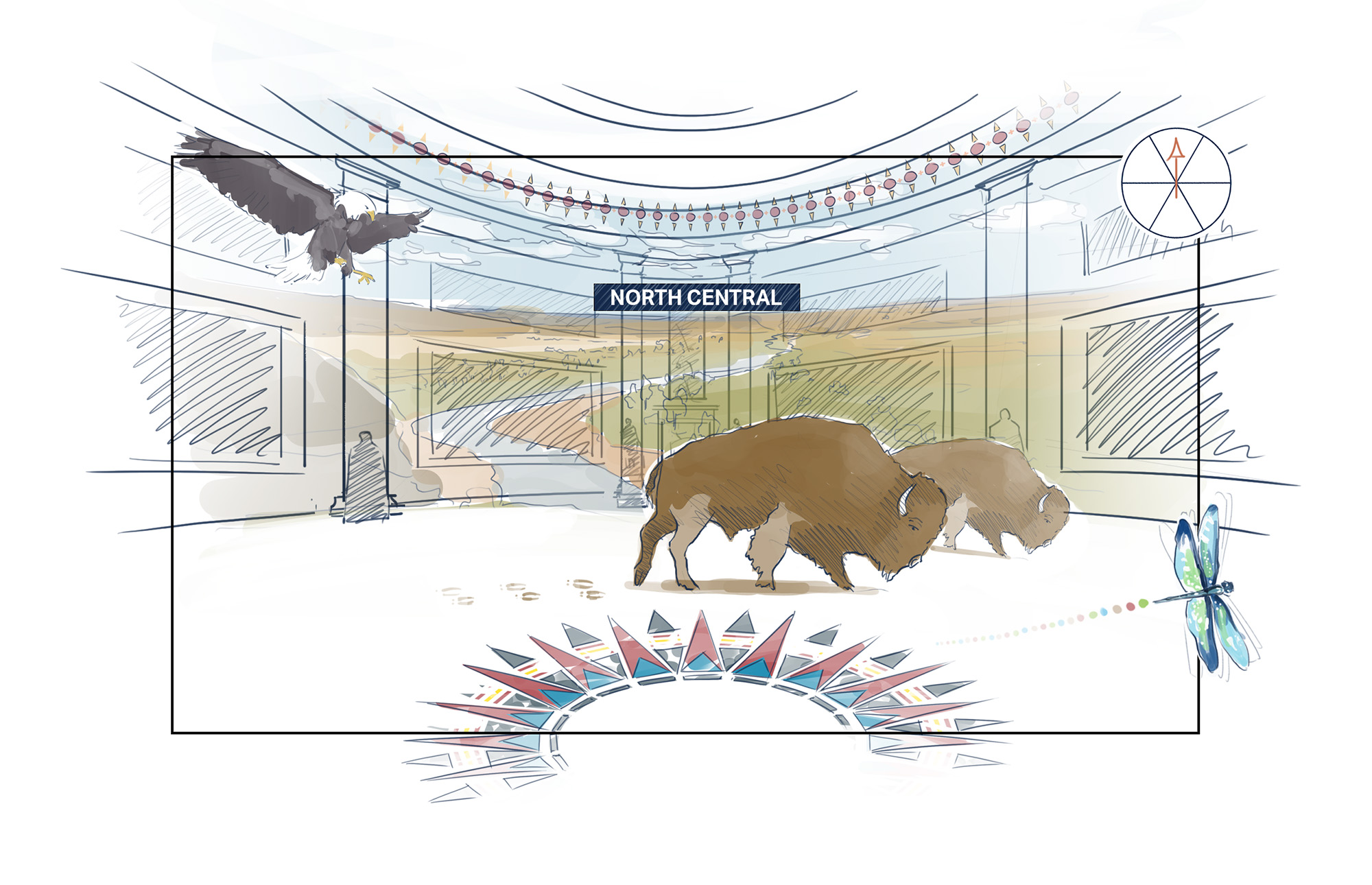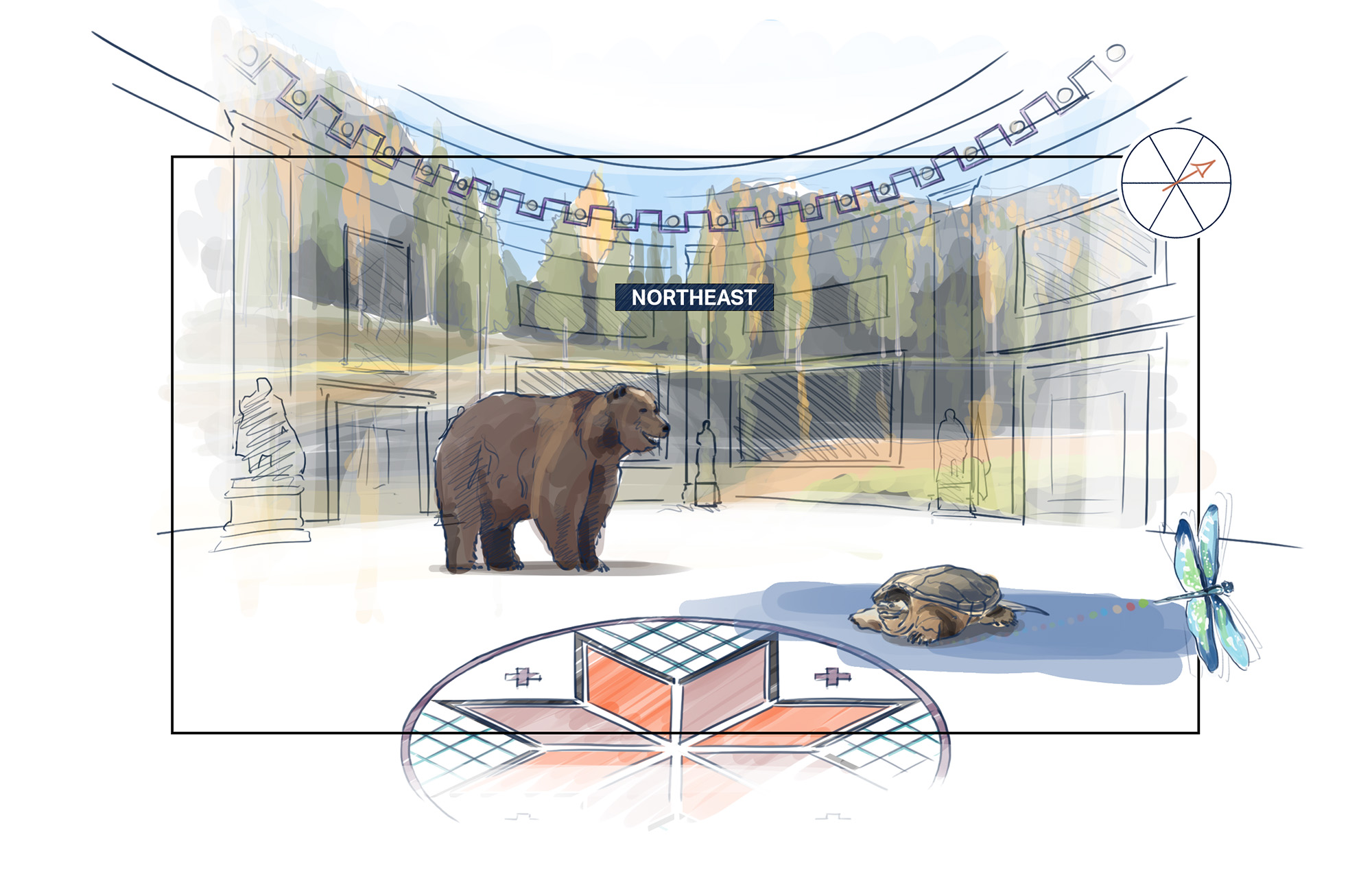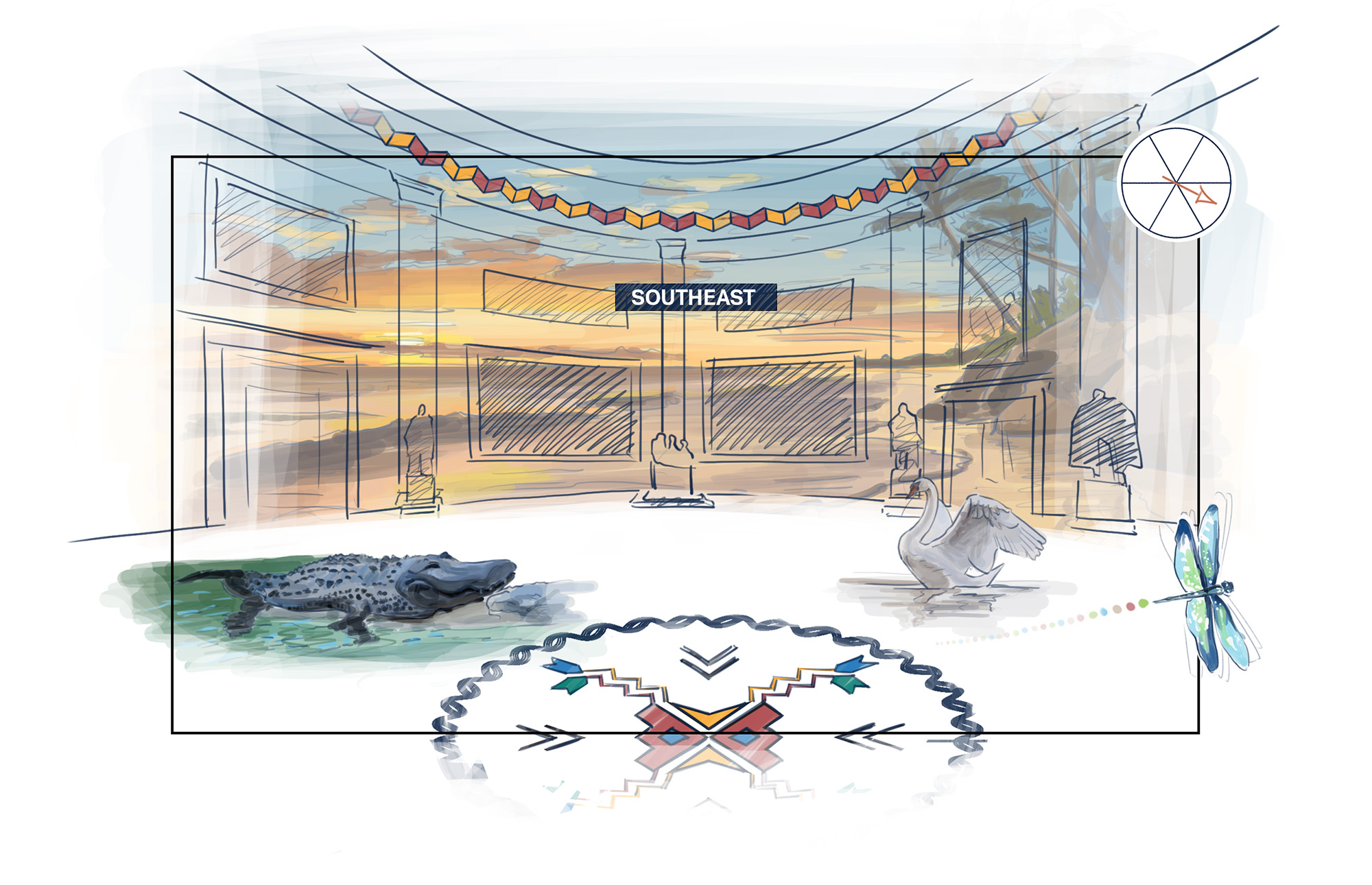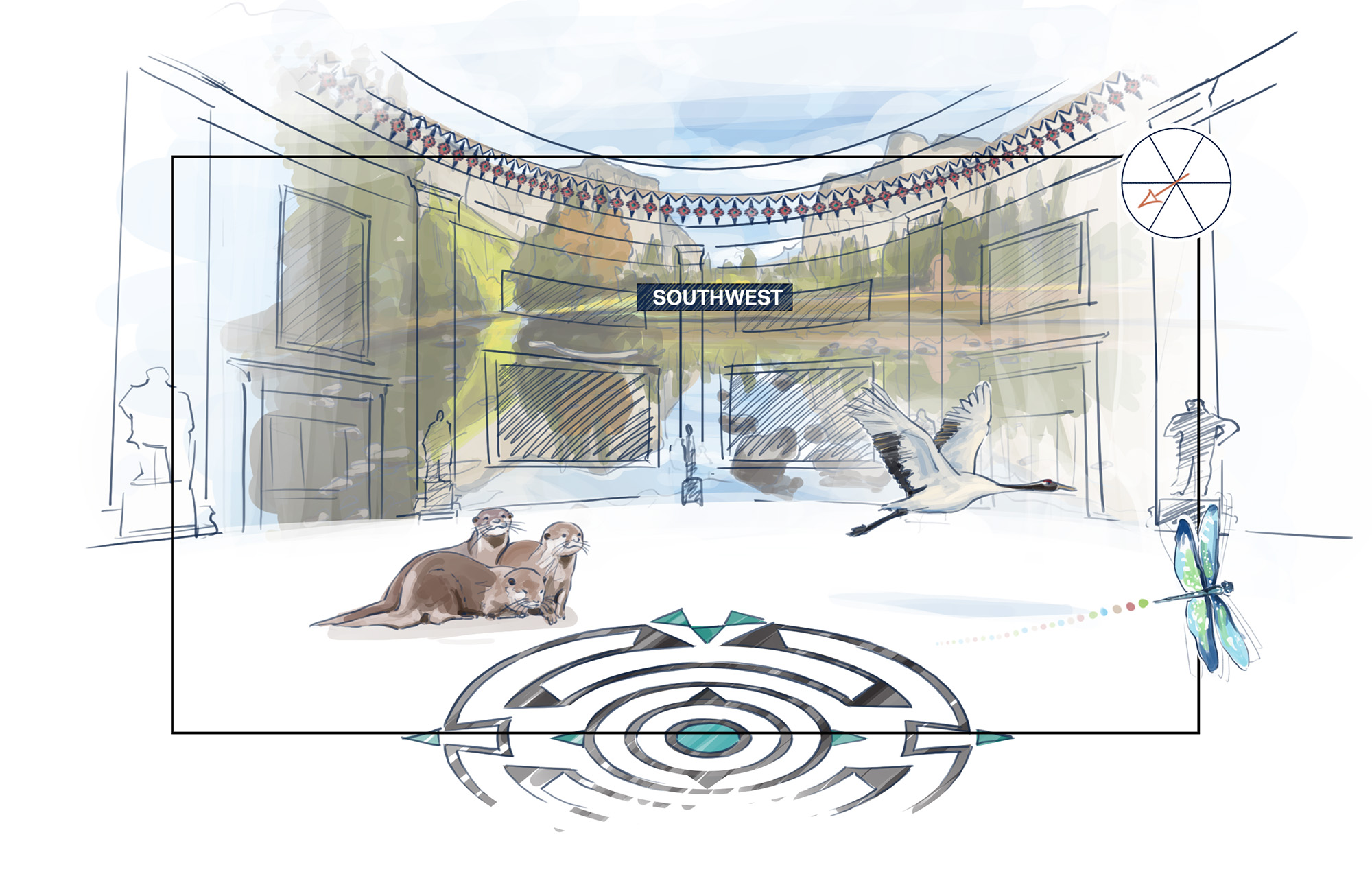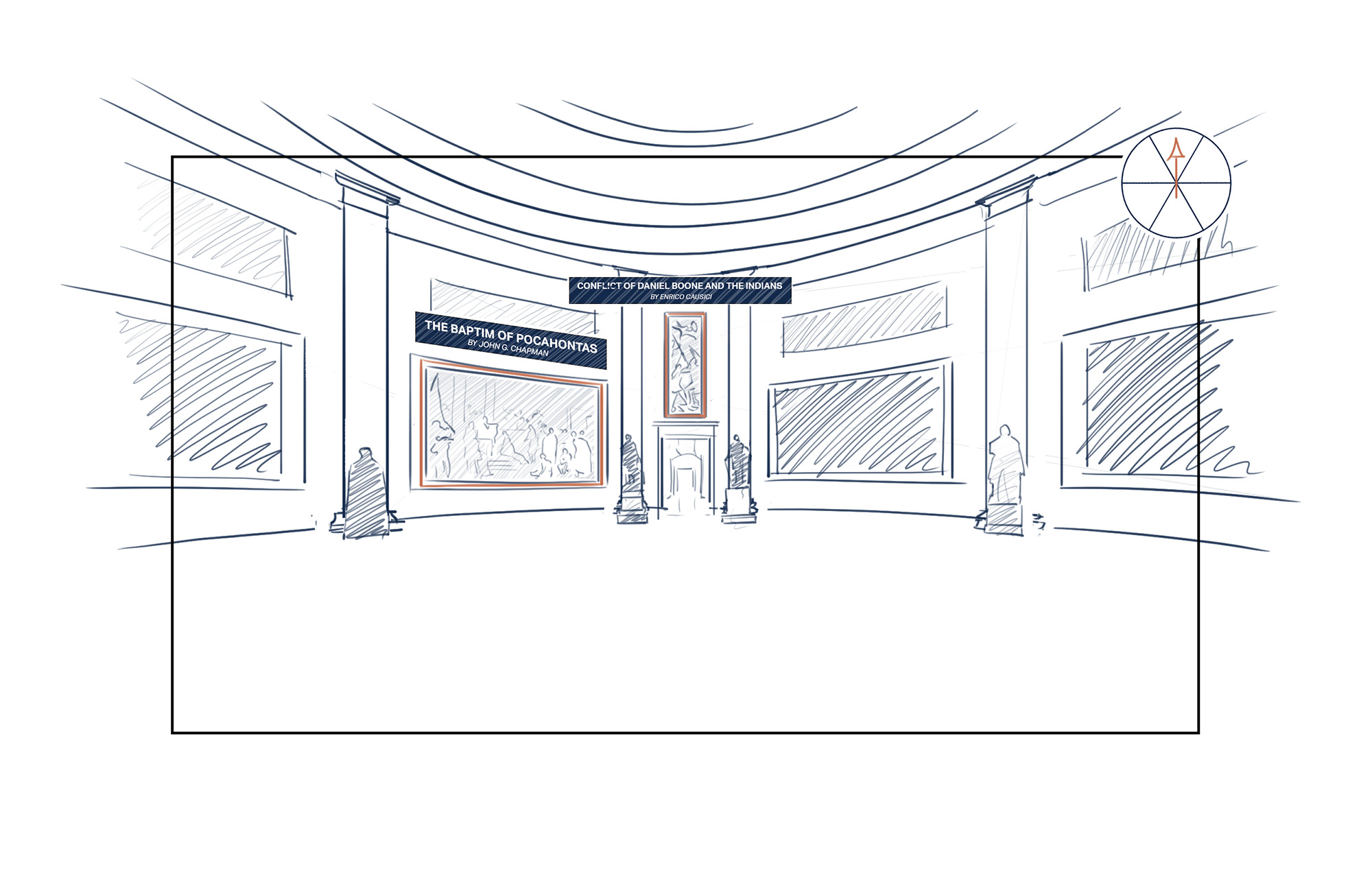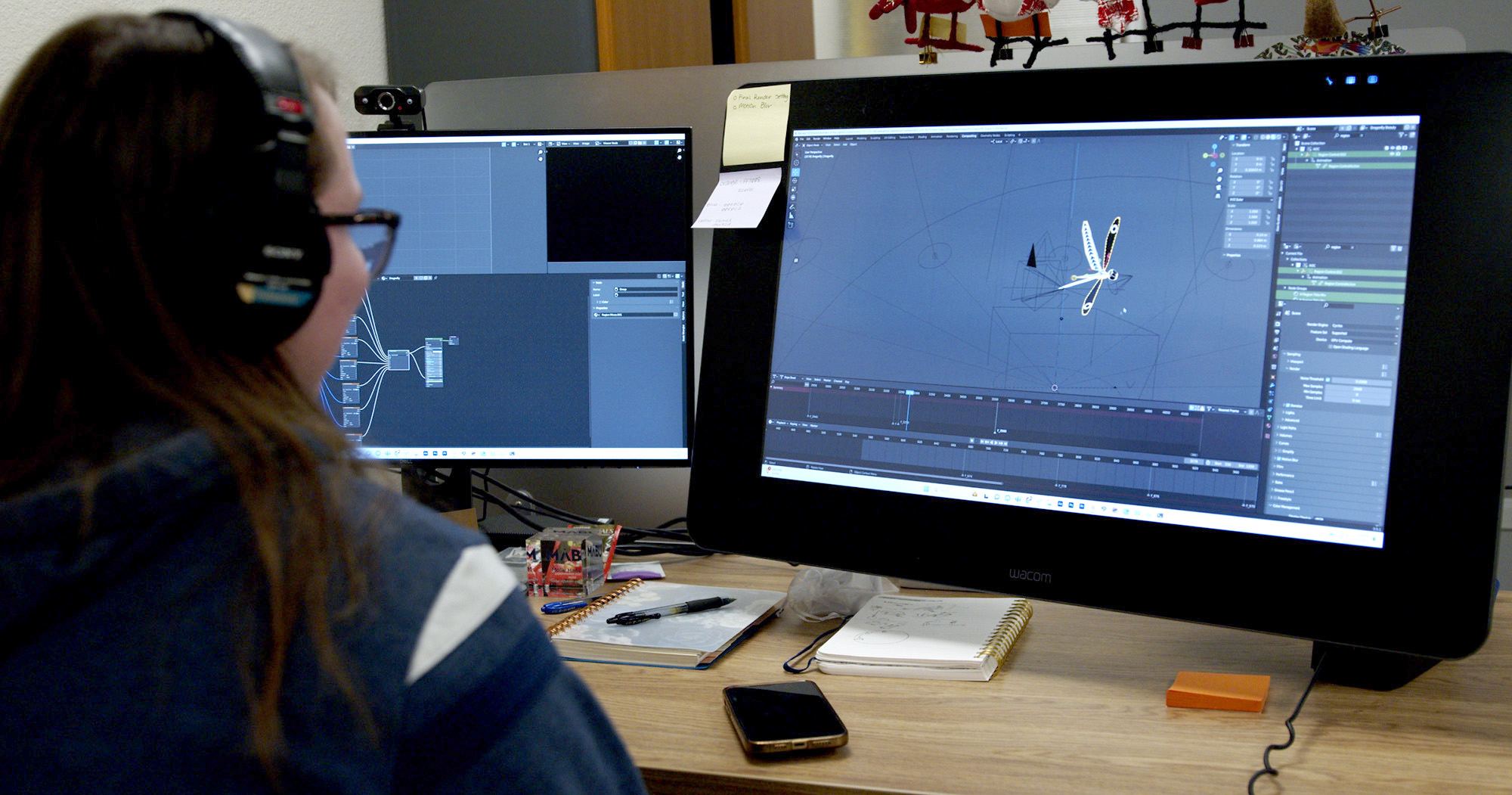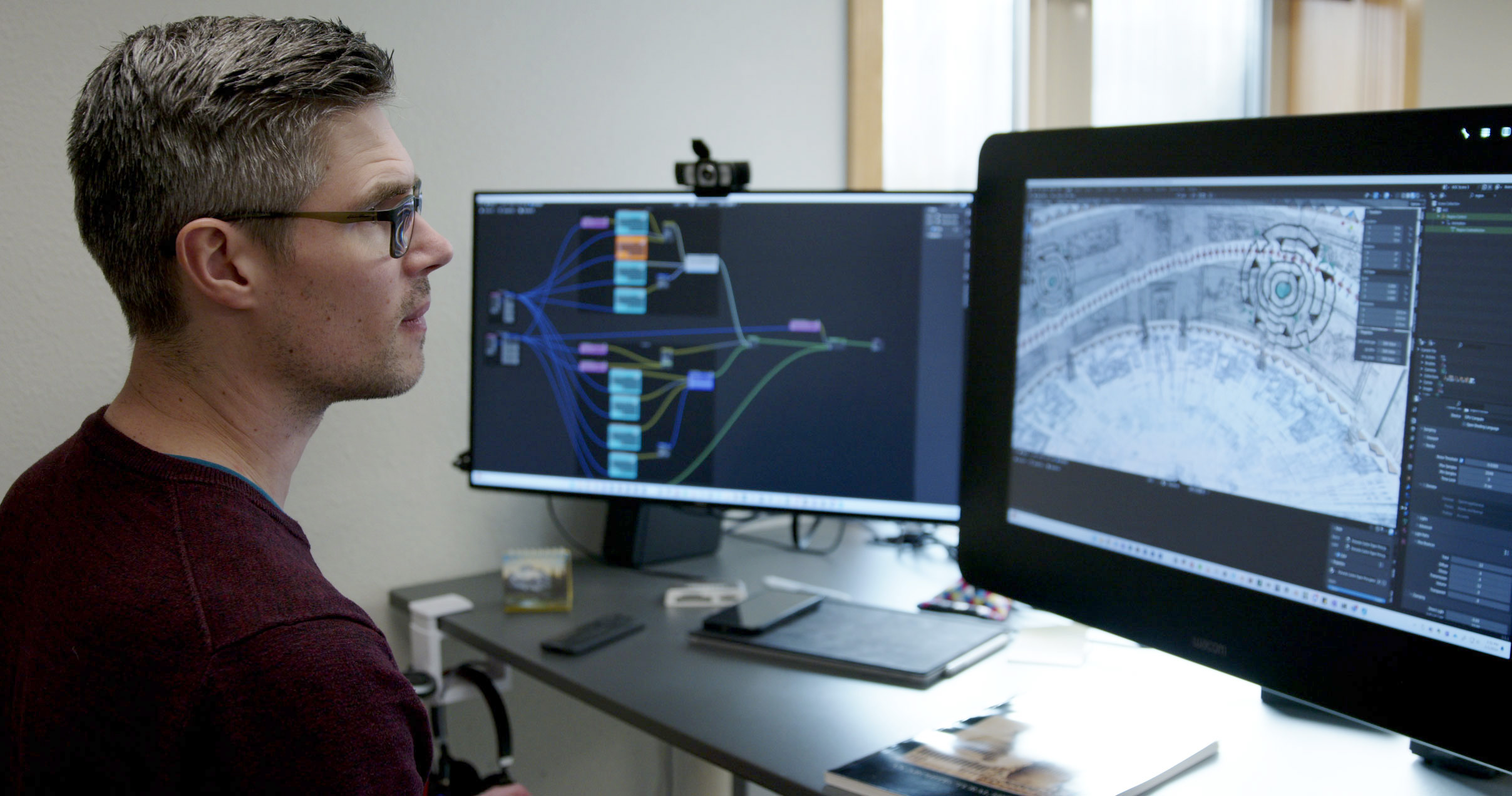U.S. Capitol Visitor Center
Rotunda 360: Indigenous Peoples in Capitol Art
The Challenge
The Architect of the Capitol (AOC) maintains the buildings and grounds of the U.S. Capitol while also preserving thousands of momentous art pieces. Together with the U.S. Capitol Visitor Center (CVC), they sought help from MABU to bring the story of Native American people to life within the historical depictions of America’s origin story hanging in the Capitol Rotunda. The project aimed to share an intimate look at the artwork through an Indigenous lens. It was not about questioning its relevancy or the artists’ intent, but to simply bring the presence and contributions of Native American People into focus.
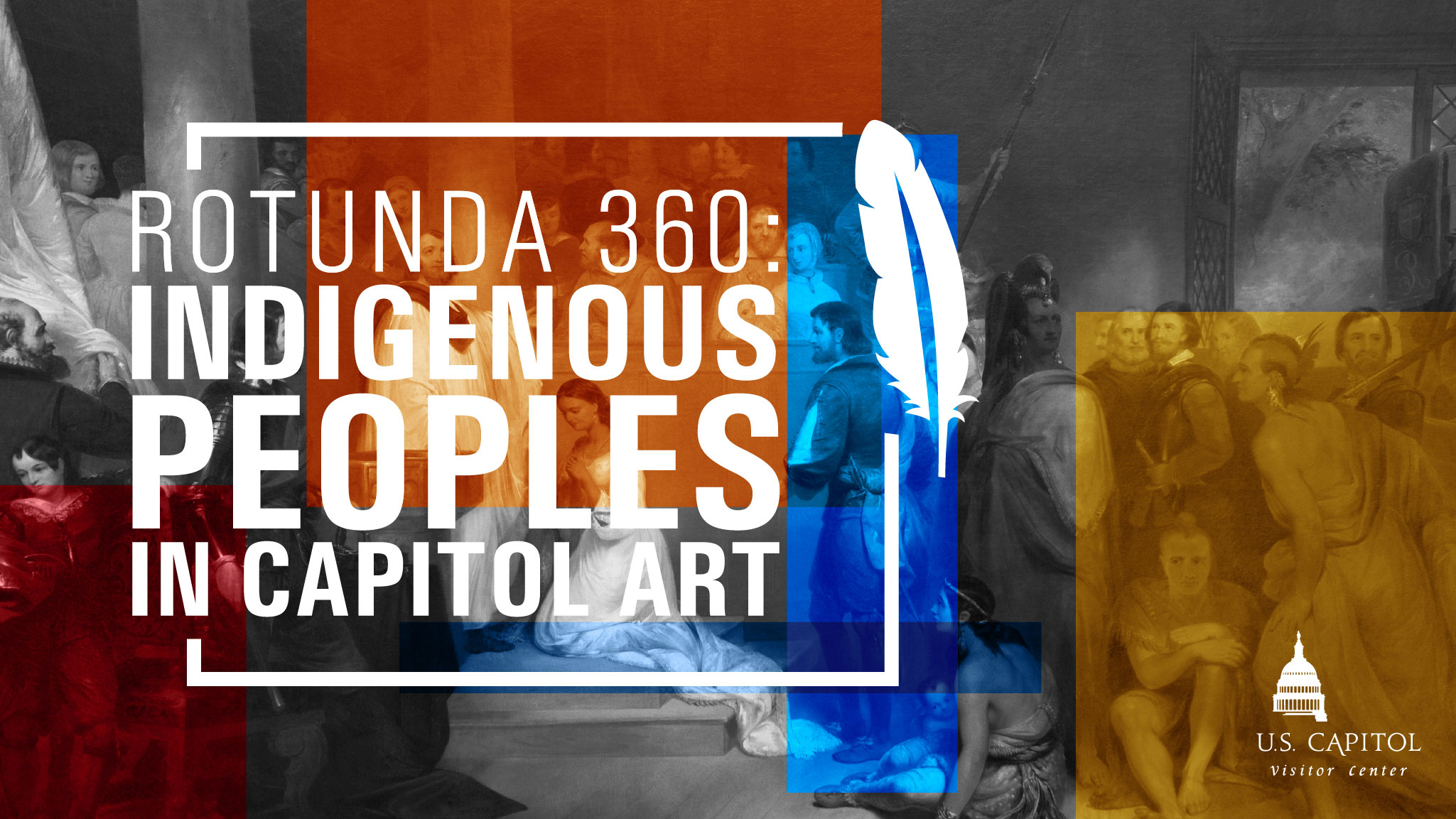
Our Solution
As our most expansive scope of work to date, we pulled together a project team of developers, designers, copy writers, and animators. (Truthfully, every MABUite was likely involved in the project at one point or another.) We pieced out the project, first working in tandem to build the space, design the interface, and outline the content for each depiction.
Working with AOC photographers, our team gathered the necessary 360° images needed to build the 3D space. Extensive image correction was completed to remove shadows, reflections, the photographer, and equipment used to capture the images. They were then color balanced, resulting in extremely high-resolution images that were all stitched together to create the space.
The experience took shape with a branded user interface that was designed to house an immense amount of information in an engaging and easy-to-follow presentation. Visual triggers were used to help direct users through the self-guided experience.
Each depiction to be showcased was broken down into three main elements: highlights, layers, and connections. Like educational building blocks, highlights provides an overview of the historic event, scenes and people portrayed, layers uncovers elements of cultural significance through image galleries and recordings of subject-matter experts and connections bridges the historical context with Indigenous communities and culture today.
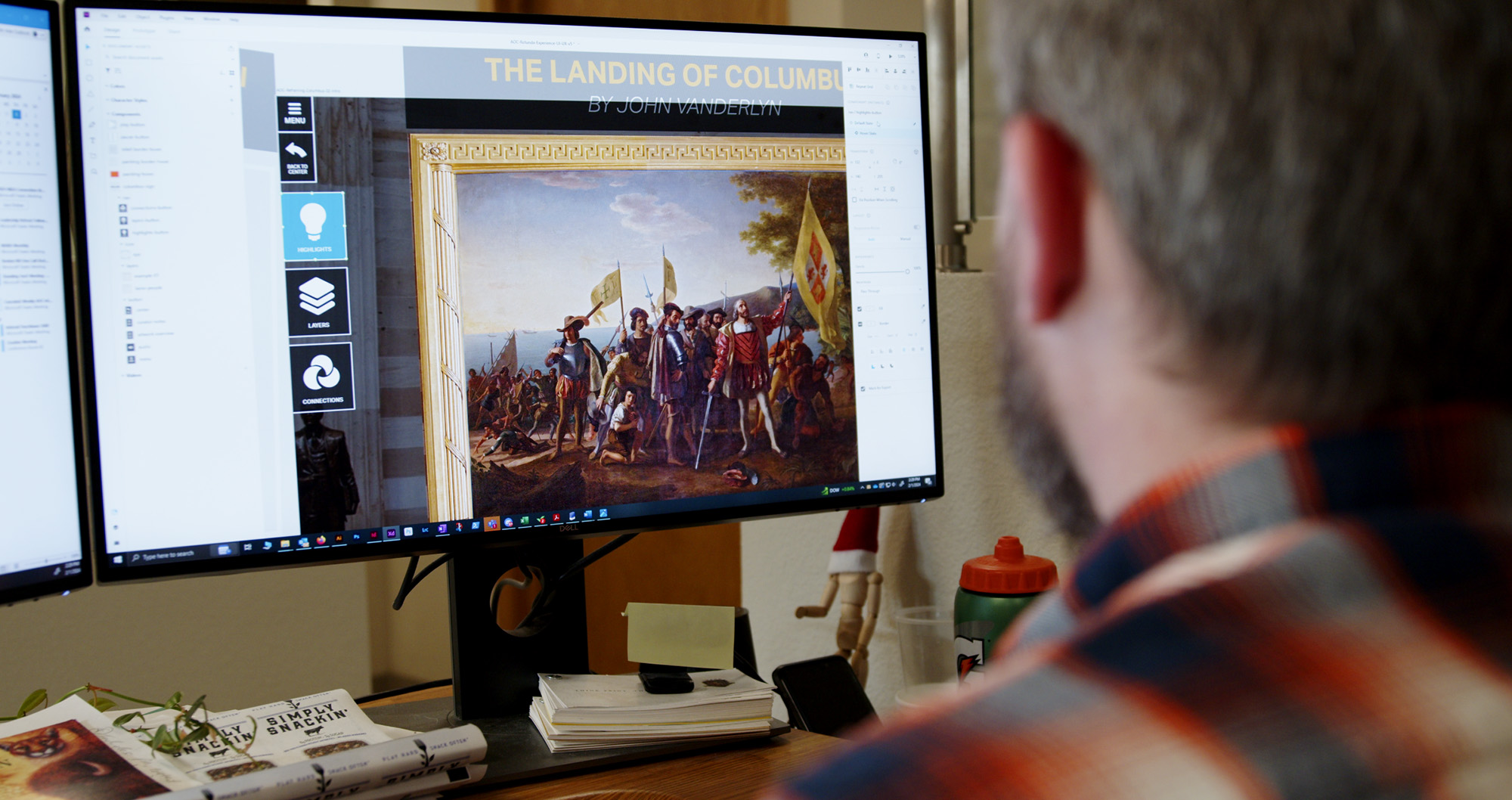
Routine meetings with the AOC project team and curator ensured historical accuracy and alignment of vision throughout the multi-year production.
The project wouldn’t be complete without a video to welcome visitors to the experience and set the stage. We saw this integral part of the experience as an opportunity to honor and celebrate the rich diversity of Native American people, as we set out to record Native greetings from tribal regions across the country. Extensive research was also conducted to accurately reflect the cultural art styles, sounds, landscapes and wildlife found within each region.
Working in a 3D space, we were tasked with blocking out the animation in a new way. While traditional video work is composed for the frame, we had to plan and design for every possible angle and path the user might take in the immersive experience. Multiple animation techniques were used including traditional 2D frame-by-frame scenes for the animals that were combined into a full, 3D environment and rendered into the 360° video.
The rendering process was one of the biggest hurdles we had to overcome. Multiple passes were needed for each element being placed in the Rotunda – every pattern, every scene, every animal. All before the final output renders that required additional lengthy passes and meticulous compositing. The entire rendering process totaled weeks, if not months, often causing those located near the render farm to shed a layer or two. On the bright side, MABU’s heating bills had never been lower!
Our largest, and arguably most challenging, project now tops the list of work we’re most proud of. We were honored and humbled to bring an Indigenous voice and perspective into America’s discovery story. The experience is accessible to the public and is used by teachers across the country as part of Native studies and U.S. history curriculum. Check out the full experience!
